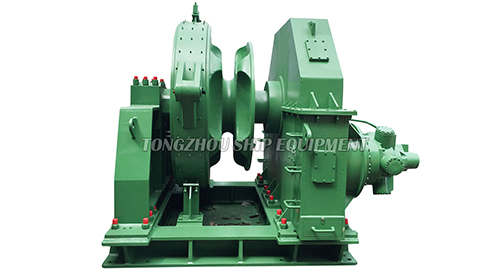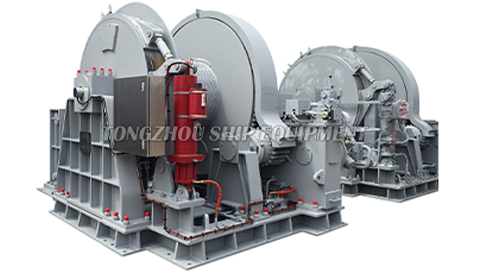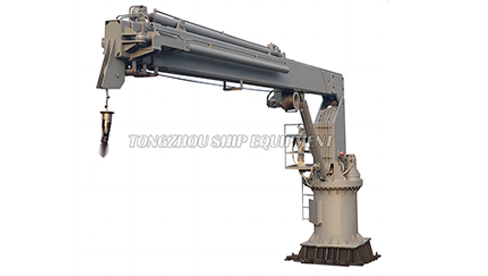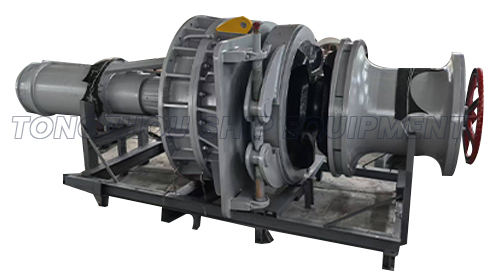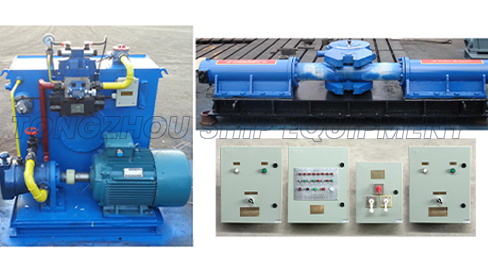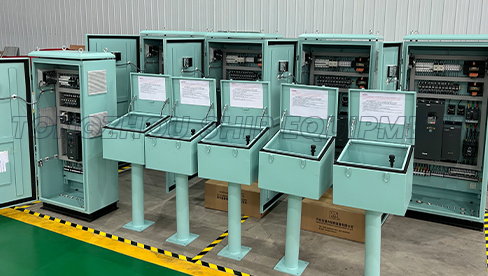What Are the Key Hydraulic Pressure Requirements for a Marine Hydraulic Anchor Windlass?
 2025.06.07
2025.06.07
 Industry News
Industry News
Marine hydraulic anchor windlass is a silent guardian for ships to berth, leave port and cope with severe sea conditions. One of the key elements of its reliable operation is the precisely designed and strictly controlled hydraulic system pressure requirements. A deep understanding of these key parameters is essential for the safe operation of the ship and the long life of the equipment.
Analysis of core pressure parameters
Nominal operating pressure (Operating Pressure):
Range: This is the most common pressure range for anchor windlass in normal anchoring and anchoring operations. Modern marine hydraulic anchor windlass systems are generally designed between 150 Bar and 250 Bar (about 2175 PSI to 3625 PSI). The specific value is determined by the anchor windlass model, design load (anchor weight + anchor chain weight + bottom gripping force), required anchoring speed and the characteristics of the hydraulic motor/cylinder.
Importance: This pressure must be sufficient to overcome the maximum expected working load (usually corresponding to the instantaneous load when the anchor chain is lifted vertically and the anchor breaks through the ground) and ensure that the anchoring speed required by the classification society rules is met (usually the average speed is required to be no less than 9 meters/minute). Too low pressure will result in weak or slow anchoring; too high pressure will increase the system load, accelerate the aging of seals, and cause unnecessary energy consumption.
Maximum (peak/breakaway) pressure (Maximum/Peak/Breakaway Pressure):
Definition: The highest pressure that the anchor windlass may reach temporarily when dealing with extreme working conditions, such as the force required to overcome resistance when the anchor is deeply stuck in silt or stuck in rocks.
Design basis: The strength design of the hydraulic system (pump, valve, pipeline, motor/cylinder) and the mechanical components of the anchor windlass must be able to withstand this peak pressure without permanent deformation or failure.
Relationship: This peak pressure is usually significantly higher than the nominal working pressure, and the system is usually required to withstand an instantaneous pressure of at least 1.5 times the working pressure. The specific value is also based on the maximum design load and the manufacturer's safety factor.
System Rating & Relief Valve Setting:
Cornerstone: The rated pressure of the entire hydraulic power unit (HPU) and its main components (pump, valve block, pipeline) must be equal to or higher than the maximum working pressure and expected peak pressure required by the anchor winch.
Key safety device: The system must be equipped with a properly set and reliable safety relief valve. Its set pressure is usually calibrated to be slightly higher than the maximum working pressure (such as 10-15% higher) but lower than the maximum allowable working pressure of the system and the mechanical parts of the anchor winch. This is the last line of defense to prevent the system from being damaged due to overload (such as the anchor being stuck).
Setting principle: The setting of the safety valve must ensure that it can open and release pressure in time when the anchor winch encounters sudden ultra-high resistance to protect the safety of the system. At the same time, its setting value should not be too low to avoid frequent opening under normal peak loads (such as breaking ground at the moment) to interfere with the operation process.
Beyond the value: system coordination and maintenance
Meeting the key pressure parameters is only the first step. The coordinated design and precise matching of the entire hydraulic system are indispensable:
Power unit matching: The flow output of the hydraulic pump must ensure that it can provide sufficient power at the set working pressure to drive the anchor windlass to the rated speed and load capacity.
Control response: Valves (especially control valves) must be able to accurately and quickly respond to operating instructions and adjust pressure changes to ensure the smoothness and controllability of the anchor windlass.
Daily maintenance: Regular inspection and maintenance (such as hydraulic oil cleanliness, filter replacement, and seal status monitoring) are essential to maintain system pressure stability and prevent internal leakage from causing pressure drop or slow response. Accurate calibration of the pressure gauge is also an important basis for diagnosing the system status.
The pressure requirements of marine hydraulic anchor windlasses are by no means a simple list of numbers. The nominal working pressure, the peak pressure tolerance, and the precise setting of the safety valve constitute an interrelated "iron triangle" that ensures safety. Deeply understanding and strictly abiding by these core parameters, ensuring the perfect match between the hydraulic power unit and the anchor windlass body, and supplemented by standardized maintenance, are the fundamentals for the reliable operation of the anchor windlass in various sea conditions and protecting the safety of the ship. Ignoring these pressure requirements may lead to insufficient equipment performance, low efficiency, or even catastrophic mechanical failure, directly threatening the safety of ships and personnel. Therefore, accurate pressure control is undoubtedly an indispensable cornerstone of safety and performance in modern ship anchoring operations.



 English
English  عربى
عربى  中文简体
中文简体 
